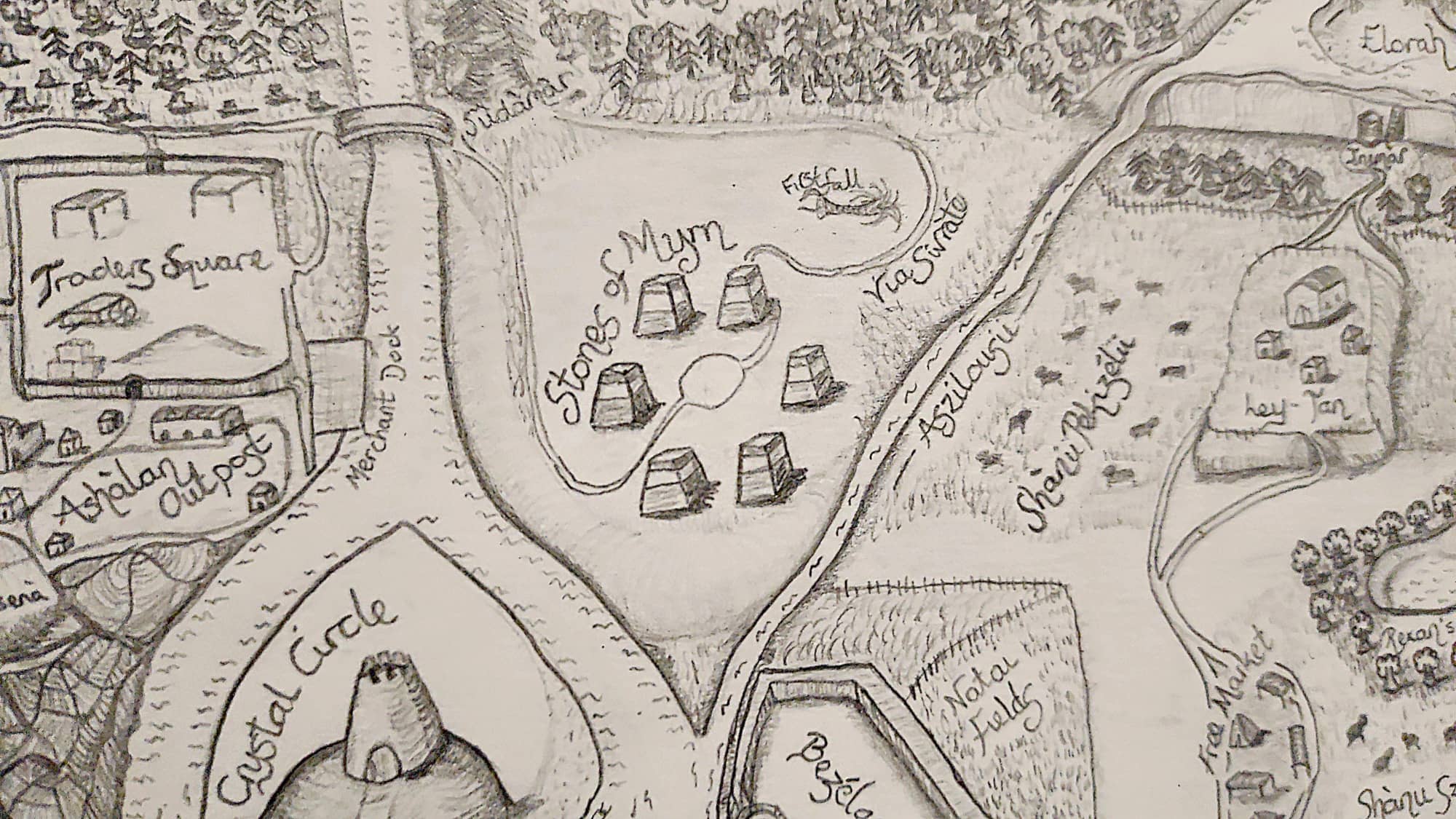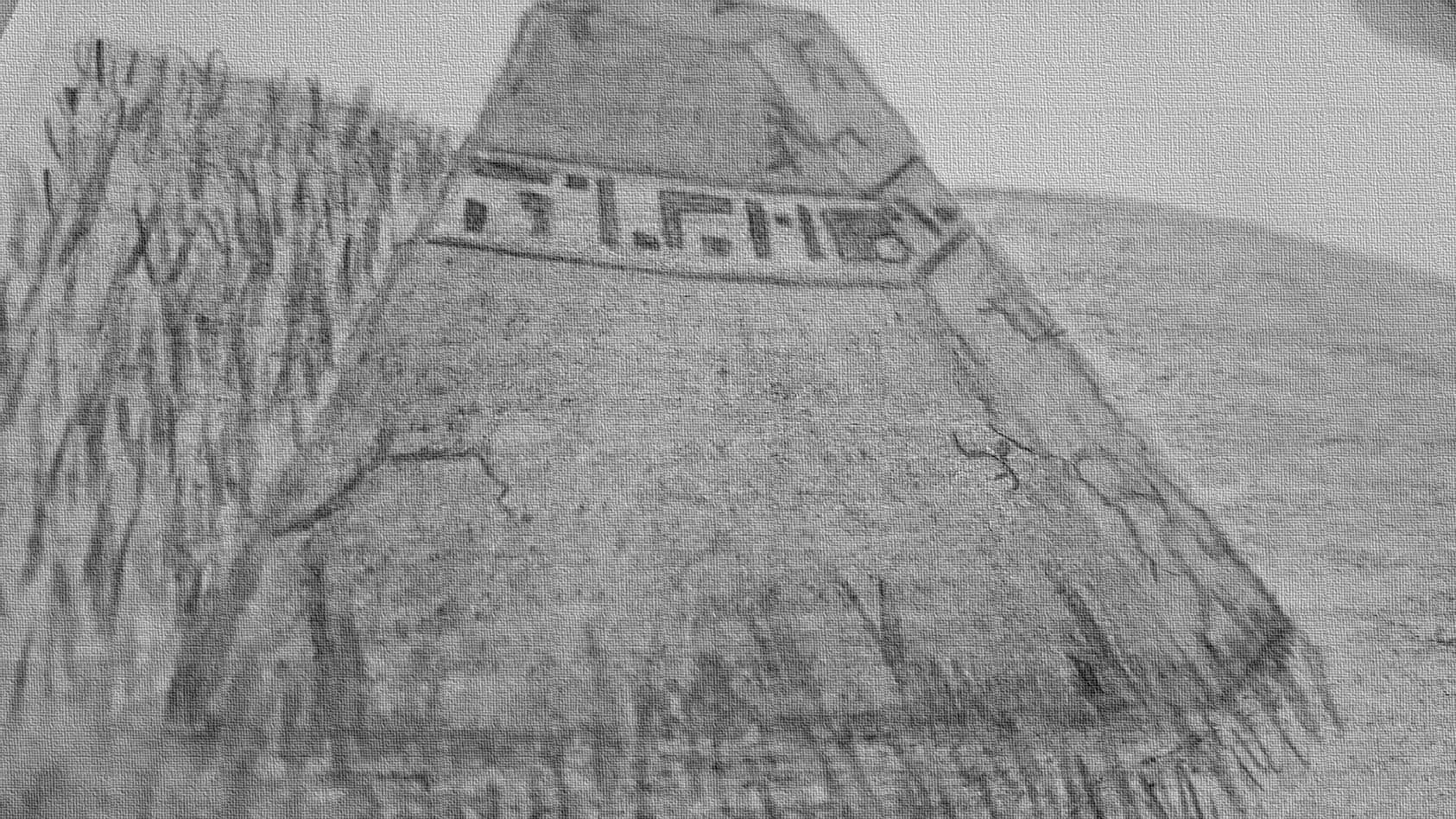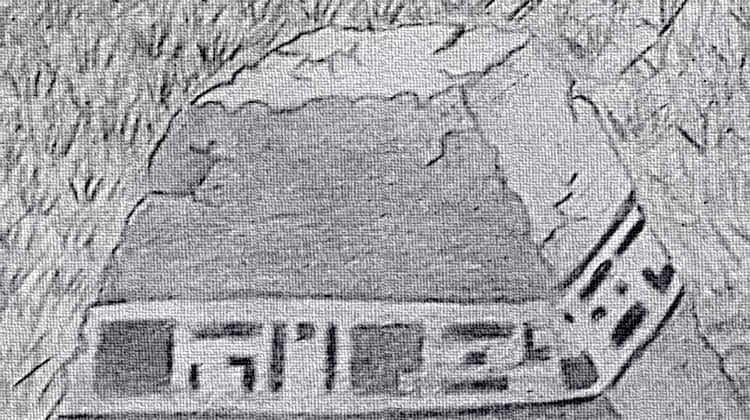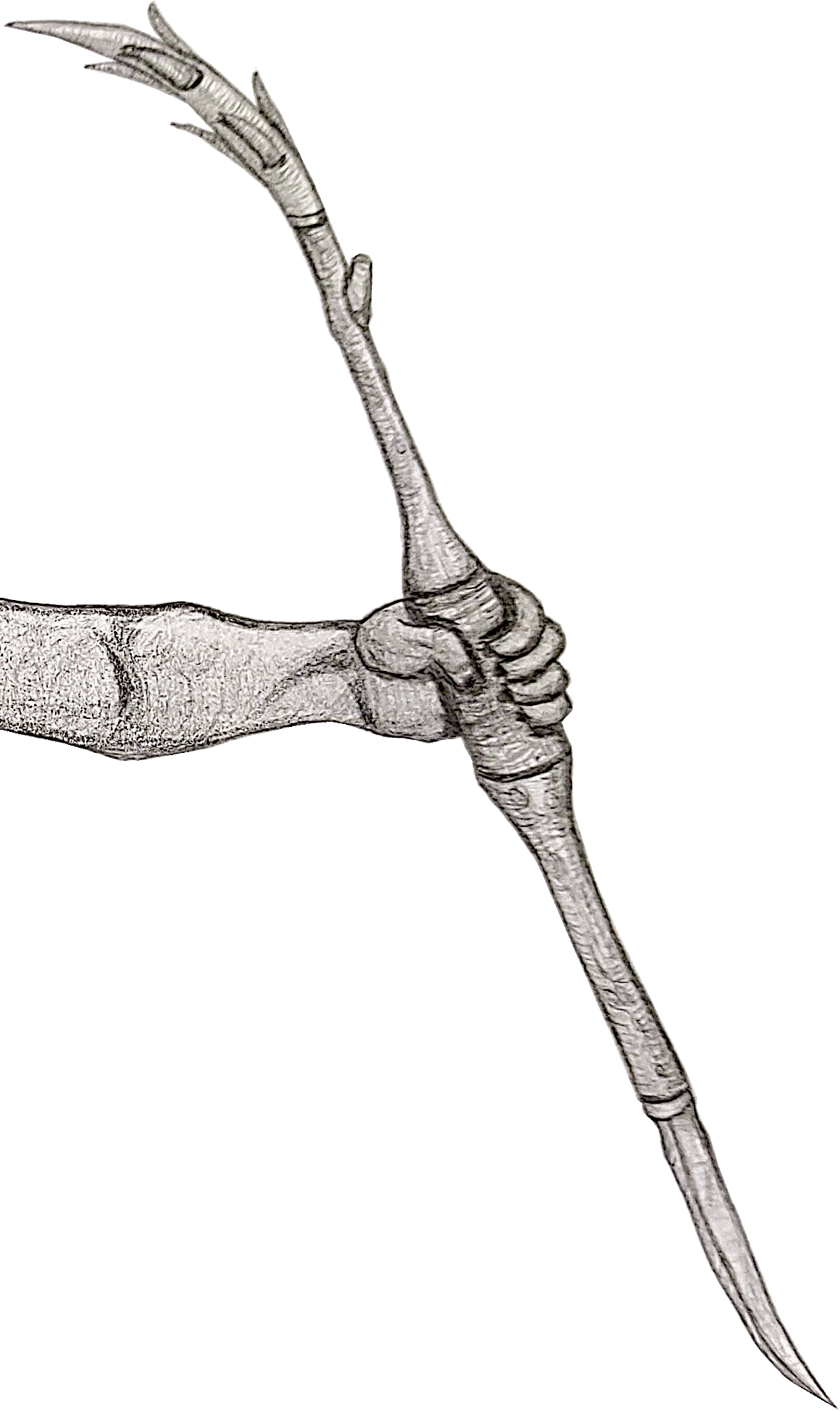Stones of Myrn
The Stones of Myrn
Meaning and Origins
514 AFD, Amended 518 AFD
By Way of Introduction
We are The Four. We have been tasked by King Carnael II in various historical tasks of which one was the interpretation and translation of the Stones of Myrn, situated North-East of Bezélan and South of The Forest of Doon. What follows is our collective work for this venture. While the King must add his seal to this document, he has been known only once to refuse such a seal, and never one from The Four. Unwilling though we were, the King commanded that The Four be named herewith, to ensure that, should another citizen be interested in the past of the glorious Realm, they may seek us out for further education on the matter. It is Fyrva 514 and we The Four are, as follows: Andrychus, Chief Archivist (Addendum: Andrychus sadly passed on in Ana 560 after a disagreement with my lord King Carnael II, -N) Néfarae, Yan’hojy, being myself I have since begged the King to remove the demeaning Foyii term ‘Yan’hojy’ to one more befitting the Capital. He has not, as yet, summoned me on this matter, though I anticipate he will soon. I have suggested the qalathian Ja’hadante (The thinker-warrior) to replace the Foyiitùn title Yan’hoji (‘lead thinker’). Not all traditions should be maintained simply because they have held for centuries. Prenaeus, Orator-Da-Prysta Lytania, Archaeology Acolyte, being apprenticed to Andrychus at the time of writing.History
Although no definitive record exists about the Stones of Myrn, they are believed to be dated back to the original founding of Qal’ath. Various, though sometimes conflicting, scrolls refer to the ancient Standing Stones as being of cultural significance around 200-250BFD. It appears they were carved from the rock from which Bezélan's foundations were dug. It seem the name of the original mason and engraver was never recorded, nor has any historical reference to him (or her) survived the passage of Time. When the stones were "purified" by the Foyii / Woodsmen around 5AFD, the craftspeople of the time were astonished at the size and quality of the work that had created the Stones. Consequently, historians were forced to re-evaluate their presumption over the skills and the tools the masons had over two centuries prior to the "purification". Although clearly now weathered by Time and Nature, the way the inscriptions had been chiselled meant all the symbols were intact. This is due to how deep the lettering had been engraved and the angle at which the craftspeople had carved them. Based on current records, it is probable the Stones themselves had been carried by hand to their present location. It is likely therefore that it took at least four, possibly six, strong warriors (gender unknown) to transport each stone. Our historians and archaeologists are still researching their origins as our records are likely incomplete on this matter.Addendum (518 AFD) To any future readers of this parchment, this is short-hand for "we do not know enough about this place and more research is needed but we don't want to say our records are woefully inadequate". Little has changed in this aspect, but where it has I have added my additions below. These are attached with Tac-Clips like this one. This will enable researchers to see the original entry as well as my own. No past observations should be erased simply because they were inaccurate or incomplete. If they were, how would we measure progress? Lytania
Significance
It is highly unlikely that they were originally called the Stones of Myrn, but from what we can ascertain, we are sure that they were a matter of great import at the time, being likely completed before even the Capital’s construction was fully under way. The few parchments that have survived the seven or eight centuries simply refer to ‘the Standing Stones’. As they were a matter of pride, as is placing your banner in an enemy’s military camp, the Stones would be celebrated.
They were renamed the Stones of Myrn after the First Destruction. So many lives had been lost in that historical tragedy, great though the final victory was. Their placement between Bezélan and The Forest of Doon was of significance as it had been mostly Qalathii and Woodsfolk who had died fending off the Lizards and the Great Bat. The Stones were therefore purified to represent unity between the people groups of the Realm.
The Engravings
From sketches and descriptions in our records, we believe that full letters could be engraved at the time the stones were constructed. Thus, we were somewhat surprised to find the engravings on the Stones that appeared crude. On further analysis, they were less rough than our cursory observations had led us to believe. Using a series of squares, rectangles and lines, distinct letters could be made out. Once we realised that each letter was of equal width (which does not, naturally, apply to written script) the translation became much easier. Below we provide the translation of the lettering of the Stones. We have recorded these from the northernmost (Nùorma) stone and following the circle to East (Est), South, (Sùda), West (Oest). After the translation, having cross-referenced their Foyiitùn meaning to various texts written prior to the First Destruction, we have attempted (to the best of our collective ability) to explain the significance of the words, to the Founding. At the time, it appears Foyiitùn was the language of the Realm. This is likely to do with early alliances and friendships with the Foyii / Woodsmen. Its use here is not an endorsement of the language, but necessary for the purposes of translation, especially as the Stones are within Qal'ath's border, not that of The Forest of Doon.Addendum: 518 AFD Oh how convenient it is to forget (or omit) certain details, even for a historian of great repute! The hill on which the Stones of Myrn were set was declared neutral territory and no edict or agreement has been made which changes that fact. Lytania
Stone One: Richaii, Brufus (Broùfùs)
Unlike the lowly use of Brufus in our time, historically it only meant “illusion”. Thus, the engraving of “Reality and Illusion” appears to be a warning to be careful to correctly discern what is real (and true) against that which is not, despite appearances.
Stone Two: Orma, Sy, Zel
“Light, you, corner”. It should be noted that Sy is an ancient word that means ‘you’. No modern records use Sy as far as we know. The significance of Zel, here took some time to decipher. In our times, Zel is only used to mean corner or point, as in Bezélan. However, a document found in an ancient crypt contained this inscription (approximately translated):
Death is found where the end of light (Orma) and the end of oneself (Sy) meet (Zel).Thus, an adequate translation of Zel may be ‘intersect’, ‘meet’ or ‘join’. Therefore, it is our view that Stone Two was a call to each person to be where light is joined, or in current language, to walk in the light (or, “in plain sight” - meaning to be accountable for one's actions, rather than providing a moral imperative).
Stone 3: Tùn, Usz, Carn
“Language, Faithful, Justice”. My esteemed colleague, Prinaeus, wished for a note here to affirm that Usz was correctly translated as "faithful" and not "faith". It would be most irregular for our civilisation, no matter how many years ago it was founded, to have any faith or belief system. Such idiosyncrasies are for tribal cultures.I will be working from my new location to begin to fix these broad-brush depictions. Both that all tribal cultures have a "faith" and that all "faith" cultures are tribalistic. Neither generalisations are accurate. Indeed, Qal'ath effectively stands for "faith in yourself to achieve", which, structurally-speaking, is as much a religion (where oneself is worshiped) as any other that focuses on some spiritual being. -Lytania
Usz
However, faithful, is a principle we can wholeheartedly support. Usz can be rendered "faithful" or "loyal". Being loyal to the Rai, currently King Carnael II, is expected – and sometimes enforced.
However, faithful, is a principle we can wholeheartedly support. Usz can be rendered "faithful" or "loyal". Being loyal to the Rai, currently King Carnael II, is expected – and sometimes enforced.
Tùn
Equally Tùn, though written in Foyiitùn, did not refer to a specific language but to language, or choice of words, in general.
Equally Tùn, though written in Foyiitùn, did not refer to a specific language but to language, or choice of words, in general.
Stone Three, we believe, is a simple encouragement to “use language to ensure justice and faithfulness are cornerstones of our society”. My less-well learned colleague Lytania (Acolyte though she is) requested a written record of an alternative meaning. I must quote, to ensure I am not attributed to it.
“Be faithful and fair in your use of language.”This is not a wholly unreasonable translation, so I have permitted its use here.
Stone 4: Naqal (Na Qal), Nyz, Shan
"No Stone, Home, Field". A most peculiar combination of words, but we are convinced in our accuracy of the letters and their translation.
Naqal
Naqal in current language is used pejoratively to speak of the homeless, such as the vagrants in Uranbé-Kur. However, it seems historically to simply refer to those whose homes were not made of stone.
Naqal in current language is used pejoratively to speak of the homeless, such as the vagrants in Uranbé-Kur. However, it seems historically to simply refer to those whose homes were not made of stone.
Nyz
The interpretation of Naqal is reinforced by Nyz (or Nysz) which is still correctly translated as "home".
The interpretation of Naqal is reinforced by Nyz (or Nysz) which is still correctly translated as "home".
Shan
Shan, or Field, then led to no small animated discussion among the Four. Why would a stone be erected simply talking about people with no stone houses who possibly live in a field?
Shan, or Field, then led to no small animated discussion among the Four. Why would a stone be erected simply talking about people with no stone houses who possibly live in a field?
Addendum (c 516 AFD)
Excavations East of the Shan De San revealed some tablets that contained some interesting insights. After piecing the rubble together it seems that Shan historically meant ‘nature’, or simply ‘outdoors’. If we take the former meaning, as well as the (presumably intentional) positioning of Nyz at the centre it seems to imply that people who live in houses of stone (Qal) and those who live with Nature (Shan), should be able to make their homes (Nyz) together. This was not completely satisfactory given Naqal is engraved on this stone. My esteemed colleague Prenaeus suggests it is possible to also interpret this as “you do not need stone to make a home befitting Nature”. As I have no alternative to suggest at this juncture, I defer to his judgement on this matter.Stone 5: Ni-Tolii, Y-Via
We are of one mind with regards to Stone Five. “No Outcasts, There Is a Way” should be correctly interpreted as “We accept no Outcasts, they will find their own way”.Addendum (518 AFD) As my Master has already forgotten the vital importance of the Stones of Myrn, I doubt he will find this addendum. He is working on ‘far greater things’ this Ana. If he does find it, it no longer matters. We were not of one mind on this translation. I may have been inexperienced in the Realm of archaeology at the time, but my adoptive parents were Foyii / Woodsmen. I was frequently overruled by my more-experienced (and, I point out, male) esteemed colleagues. To translate ‘Ni-Tolii, Y-Via’ you need to understand the heart of the message and the nature of the people whose language it was based on. The true translation is “there should be no outcasts, there is a way”. We should therefore be inclusive, not throwing people out of the Realm, simply because we disagree with them. There is always a way of Peace (Via Da Pích or Viàpích) to ensure all people feel at home in Qal'ath. In short, the true meaning is precisely the opposite of the one given to the King. Lytania
Stone 6: Graszii, Kyl
“Thanks, Protection”. These words exist in Foyiitùn to this date, though the King insists (and must therefore be obeyed in this, as in all matters) the spelling and pronunciation be Grasha or at least Grashee. Simply put“We should always give thanks to those that protect us.”The Four were divided on this interpretation, however. Esteemed Colleague Prenaeus and I follow this interpretation. Lytania and my esteemed superior Andrychus took the following view:
“Showing gratitude protects us”.It is, according to these two, to ensure that relationships are reinforced in a spirit of thanks, rather than ungratefulness. As my esteemed superior Andrychus is equally head over Prenaeus, we agreed to leave both translations on record.
Addendum: (518 AF): This is my final note and I will be filing this, along with other supporting documentation and linguistic analyses, in the Archives in their correct place. Where I was, on the original record, deemed inferior, was simply because I was exercising the researcher's right to be objective. In my view - and it seems only my view, looking back - the translation and recording of these Stones was tainted by a desire for acceptance by my lord King Carnael II. He is still my King and, yes, we should obey the King. But not mindlessly so - for he has had his opinion changed many times by our advice and that of The Crystal Circle. Decisions cannot be made on tainted intelligence or information badly presented. Let future generations judge these records, along with what happens to our crumbling nation. But at least all our opinions are now fairly recorded. Not that I'm deluded enough to believe another will not add an addendum to my own. But that is what record-keeping is for: leaving a subject in such a state as another may continue where we who went before left off.Lytania.
In Conclusion
The site of the Stones of Myrn is of great historical significance, even though now it has been neglected in favour of more modern and – I hasten to write – more appropriate maxims for our people. The primary use of the work of The Four should be in deciphering any other tablets or potentially coded parchments uncovered in the future. We have reason to believe that secret messages were sometimes written with these engravings as only a few knew their significance. This parchment should be filed in the Archives, in the Annals along with Document XVII. Signed: Archav Yan’hojy, Milcae (Fyrva, 514 AFD)Article Sections
The Four at 514 AFD
Extra Detail
Relevant Timelines
History of Qal'athKing’s Scribe, Merszynta 515 AFD
The King did, willingly, attribute his seal to this work. Additionally, extra recognition was given to Acolyte Lytania for her notes and alternative translations. My lord the King believes her views were disregarded by the Four as potentially disrespectful to the King and the principles of The Realm. While an honourable motivation, such disagreements were inevitable when we formed The Four. In all other aspects of life, Acolyte Lytania was a model citizen, so we do not believe she was insubordinate in her views, but merely noting her personal perspectives. Prenaeus was promoted in recognition of his good training of his Acolyte and Néfarae was duly cautioned about his reserved attitude, though his title change was granted. Lytania was, last month, reappointed to leader of the Archives, but will still form part of The Four until a suitable replacement is found.













Comments